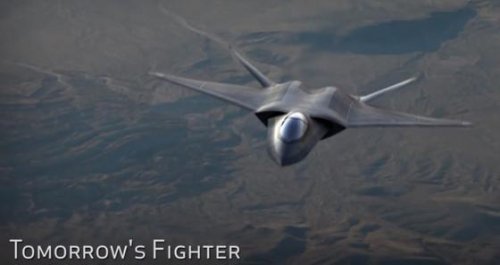Of course with the timelines involved in developing and fielding a 6th Gen fighter you really can't 'wait' to see what your enemies develop before proceeding with the next generation.
I did not suggest that we wait to see what capability they field, and then begin development. What i am suggesting is that we begin to lay the ground for the technology that will be required to beat the sort of threat the current intelligence is forecasting for a post 2030 environment. Of course as we get closer to the 2020-2025 time line, then more mature systems could be proposed. The program and the studies are to FRESH at the moment for the contractors to pick and start designing fighters for...We will have to work out, what level of SENSORS can be developed in the next decade that will enable Long range detection and targeting of Stealth aircraft, which would have proliferated by then throughout the Pacific (J-20, J-31, Pakfa, Potential Stealthy versions of the current 4th gen aircraft (similar to F-18E/F International), we also need propulsion targets that can be delivered with high probability in those time lines...Without answers to these questions, the concepts proposed by Boeing or Lockheed, do not really mean much, as we have seen with the ATF when the final product looked quite a bit different from what was being proposed in the 80's. The LRS_B which should be the "Best thing for stealth" since the B-2, should allow for vast R&D into Newer materials, coatings (RAM, RAS, IR suppression) that can be leveraged into other programs...Similarly the AETD, which should prepare the Variable Cycle engine for the EMD phase, will lay the foundation of any future propulsion requirements (I think the Navy has their own Variable cycle engine as well)....So all these technologies really need to be mature or significantly de-risked before design teams can go about formulating formal designs for submission...Without those targets, its mostly graphic work

with little substance, besides the general outline of what the designers are thinking at that time. Its very easy to just randomly add capability, like 20% greater Supercruise, 20% better VLO, 20% better range etc, but as the ATF has shown, the NG will most likely bring capability to the table that the 5th gen does not possess. Long range targeting of stealth fighters and ucav's, Mach 2+ supercruise, Long range, DEW's, Modular Weapons Bays, etc are what i can think of....A 2 seater version could also be made possible.
BTW, Has anyone come across the Northrop proposal for the 2012 FA-XX RFI? The Boeing and Lockheed Graphics get spoken a lot, but i would expect NG to also have something that they would like to offer, unless they plan to partner with B or L and not go in by themselves (Seems unlikely)...If Indeed its NG that has an upper hand in the LRS_B (which some speculate) then they would probably have the most access to cutting edge R&D on new materials and stealth.


